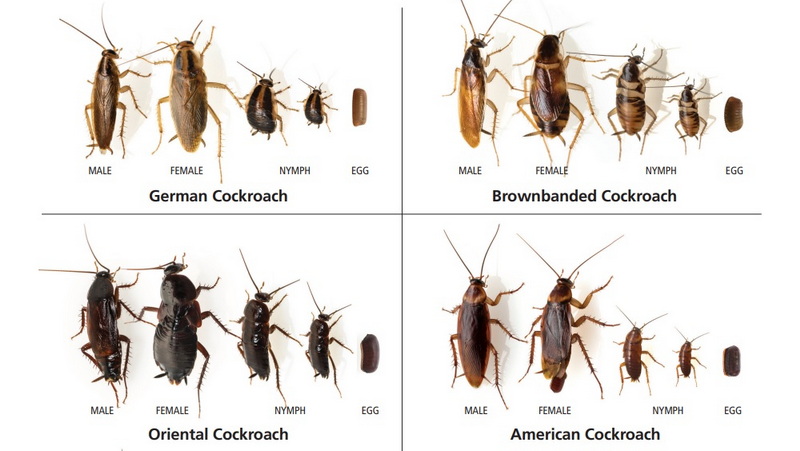
The sight of a cockroach elicits a visceral reaction in most people, and rightly so. Disease-causing microorganisms (pathogens) are carried by cockroaches, including cholera, dysentery, diarrhea, and typhoid fever. Roach allergies are common and they can trigger life-threatening asthma attacks, especially in young children. Seeing a single roach generally means you have a significant infestation on your hands, so give us a call as soon as possible if you ever come across one in your home. Cockroaches multiply very quickly. There are anywhere from 18 to 30 eggs in each of the ootheca (egg casings) that a female roach can produce.
There are four common species of cockroach in Missouri. Brown-banded cockroaches can be found hiding just about anyplace in the house, whereas German cockroaches are notorious for making themselves at home in the kitchen. American cockroaches are most commonly seen in commercial settings like supermarkets and eateries, though they are not limited to these types of establishments. Cockroaches of the Oriental variety are commonly discovered in damp areas such as basements and around pipes.
German cockroaches range in color from tan to a light brown and have two dark stripes running along their back. They are six legged and oval shaped with antennae. The German cockroach is most common in the kitchen because of its preference for dark, damp locations. Sinks, appliances, cabinets, and baseboards are favorite hiding spots for these pests, but roaches can form huge congregations wherever you have a dark, damp space. Store-bought pesticides are likely to be ineffective vs. cockroaches due to resistances that have built up in the population and also the fact that it takes very specific knowledge to be able to exterminate a population that is in various stages of development. What kills an adult cockroach may not kill a cockroach egg and vice versa. Cockroaches can eat almost anything, including glue, soap and toothpaste. Cockroaches pick up germs and bacteria on the spines of their legs and then distribute them to anything they eat or touch. There are proteins in their bodies that are known to exacerbate asthma symptoms, especially in children. Despite their wings, this species almost never flies, but as anyone who has every flicked on a light switch in the middle of the night in an infested home, they can run very fast.
Like the German cockroach, you can find brown-banded cockroaches all over the United States. Their wings have a distinct lighter brown banding. These roaches prefer warm, dry hiding spaces. Common hiding places include the backs of picture frames and clocks on walls, underneath and inside furniture, and the shelves of cabinets. They can hide in your television, computer, or lamp.
The back of an American cockroach’s head has a distinctive yellowish figure 8 design. They can be found all over the world and are the biggest of the roach species that invade homes. American cockroaches are commonly found in very dark, very damp environments like basements and sewers, especially around leaking pipes and drains. They’ll also cluster in food and water-related facilities like kitchens, baths, and laundry rooms. When temperatures are high, they become more active.
Large and typically found in the northern parts of the United States, Oriental Cockroaches range in color from lustrous black to dark reddish brown. Oriental cockroaches are a common summertime pest, and they can enter homes through drains or under doors. After entering a home, this species looks for dark, damp areas, like basements or crawlspaces, to live in. They are frequently referred to as a ‘Waterbug’. Cockroaches of this type are notoriously filthy and emit a pungent odor.
Although filth isn’t the only culprit when it comes to roach infestations, keeping things tidy around the house will lessen the likelihood of a problem and make elimination less of a chore if one does arise.